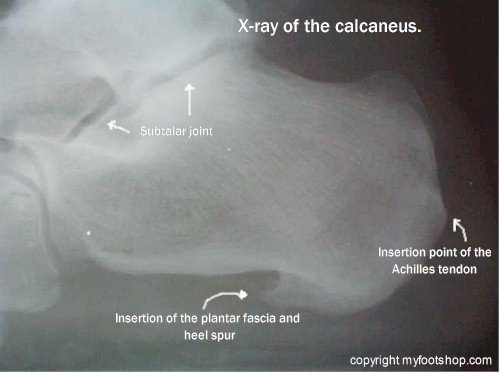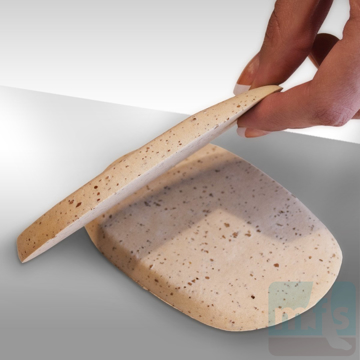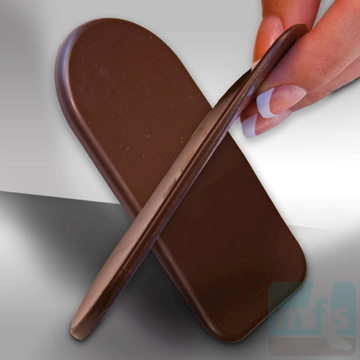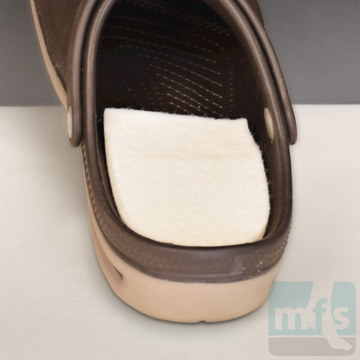Plantar fasciitis is actually a fairly new medical term that is used to describe an old problem - heel spur. What's the history of this transition from heel spur to plantar fasciitis? Thsi article explores the definitions of heel pain and the history of plantar fasciitis.
Plantar fasciitis - history
Let's talk a little bit about plantar fasciitis. I'd like to get away from the traditional educational format and have a conversation  about plantar fasciitis, touching on some of the subtleties of the condition. Let's break this conversation into four parts; the history of plantar fasciitis, what causes plantar fasciitis (etiology), the differential diagnosis of heel pain and treatment options for plantar fasciitis. I'll relay some of my experiences in treating plantar fasciitis over the past 30 odd years.
about plantar fasciitis, touching on some of the subtleties of the condition. Let's break this conversation into four parts; the history of plantar fasciitis, what causes plantar fasciitis (etiology), the differential diagnosis of heel pain and treatment options for plantar fasciitis. I'll relay some of my experiences in treating plantar fasciitis over the past 30 odd years.
As a point of reference, there are two things I'd like to mention before getting into the details of plantar fasciitis. First, plantar fasciitis is one of the most common foot conditions that I see as a foot care specialist. Heel pain will be the single most common complaint in a podiatrist's office. Granted, not all heel pain is plantar fasciitis. And that's where the art of medicine comes into play. And we'll address the differential diagnosis for heel pain in a following blog. And second, there's a lot of misunderstanding and misconceptions regarding the causes and subsequently the treatment of plantar fasciitis. We'll address these misconceptions in the blog to follow on treatment of plantar fasciitis. But first, let's talk about the history of plantar fasciits.
When I'm working with a patient and trying to help them understand a condition, I like to tell stories. Stories convey information in an informative way that people can remember. Stories have been used for thousands of years to illustrate life. The story I tell my patients to illustrate the history of plantar fasciitis goes back to more than 100 years ago. There were a number of patients who went to the local family doctor to ask why their heels hurt. The patients described a classic set of symptoms that went something like this, 'When I try to stand, particularly in the mornings getting out of bed or after I've been sitting for a bit, I get a sharp tearing pain in the bottom of my heel. Some days it seems as if it's getting better but then the next day it seems to get worse again. It's always relieved by rest.' The doctor proudly said, "Fortunately you've come to the right place. I keep up on the latest developments in medical science and invest in the latest technology. Did you know that we are the only practice in town that offers a new test that can actually see your bones? This new test is called an x-ray machine."
X-rays were taken that day and the doctor was surprised to see that many (not all) of the patients with this unique collection of symptoms showed evidence on the bottom of the heel of a projection or what appeared to be a spur on the bottom of the heel. Assuming that the primary problem was due to this spur on the bottom of the heel, the doctor called the patient back into the office to proudly tell them that his new x-ray machine had made the diagnosis. They had a heel spur.
Well, not so fast. This doctor actually did some bad science. Bad science is when you jump to a conclusion. Good science, on the other hand, is when you compare two populations of patients, one group who has the symptoms and another group who do not. Had this doctor done good science and studied similar populations of people in terms of age and weight, he would have been surprised to find that many patients who have heel pain have no heel spur. And even more surprising, just as many of the group that had no heel pain actually had heel spurs. Are you following me here? It's not an x-ray that makes the diagnosis. The presence or the lack of a spur on x-ray means very little. And that's because the primary problem is not bone, it's soft tissue. Fast forward to today - many insurance companies will not pay for x-rays when the accompanying diagnosis is plantar fasciitis.
So now let's go back to maybe 30-40 years ago. We have two camps of providers. Some doctors still are holding fast to the diagnosis of a heel spur. In doing so, they treat patients with horseshoe pads, donut pads, and cushions. When the pain fails to respond to conservative care, their surgical treatment is to resect the heel spur with a hammer and chisel.
But there was also a growing camp of providers who suspected that the primary problem was not bone at all but actually soft tissue. A band of tissue called the fascia attaches to the exact location of the spur on the bottom, or what is referred to as the plantar surface of the heel. From an anatomical standpoint, since this band of fascia is located on the plantar surface of the foot it is called the plantar fascia. This group of doctors suspected that the plantar fascia was inflamed. In medical jargon, when a tissue structure is inflamed we use the suffix 'itis'. Think appendicitis, bronchitis, arthritis - follow? So in this case, the soft tissue etiology of these unique heel pain symptoms was called plantar fasciitis.
Medical dogma is slow to change. Doctors look first to their peers for trends and second to the literature for confirmation of these trends. I was fortunate to be a part of this bone vs soft tisse trend in the late 1980s and early '90s. I was invited by Steve Barrett, DPM to use his new, patented procedure called the endoscopic plantar fasciotomy. Steve's idea was to treat plantar fasciitis with a minimally invasive procedure that simply cut the fascia at it's insertion to the bottom of the heel. Steve's idea was revolutionary, both philosophically and technically. It required doctors to have a new way of thinking and a new technical skill. As
Steve tells the story, he was waiting for a friend to go play tennis. His buddy was a hand surgeon who was finishing an endoscopic carpal tunnel surgery. While Steve watched the procedure, he thought - why couldn't I apply the same technology to performing an endoscopic plantar fasciotomy? Fortunately, Steve was an innovator and risk-taker. Steve works out the kinks in the procedure and began to teach others. He published in peer-reviewed journals and still medical dogma was slow to change. Today endoscopic plantar fasciotomy is commonly used and even has it's own CPT code for billing purposed. Steve was the driving force behind legitimizing the concept of fasciotomy vs spur resection. He proved that the primary problem is not a bone spur but instead a soft tissue problem we now call plantar fasciitis.
Additional blog topics in this series include -
Plantar fasciitis | Causes and contributing factors
Plantar fasciitis | Differential diagnosis of heel pain
Plantar fasciitis | Conservative methods of care
Plantar fasciitis | Surgical treatment
Plantar fasciitis | Additional treatment methods
Plantar fasciitis | Surgical complications
Jeff
Medical Advisor
Myfootshop.com
Updated 4/23/2021















